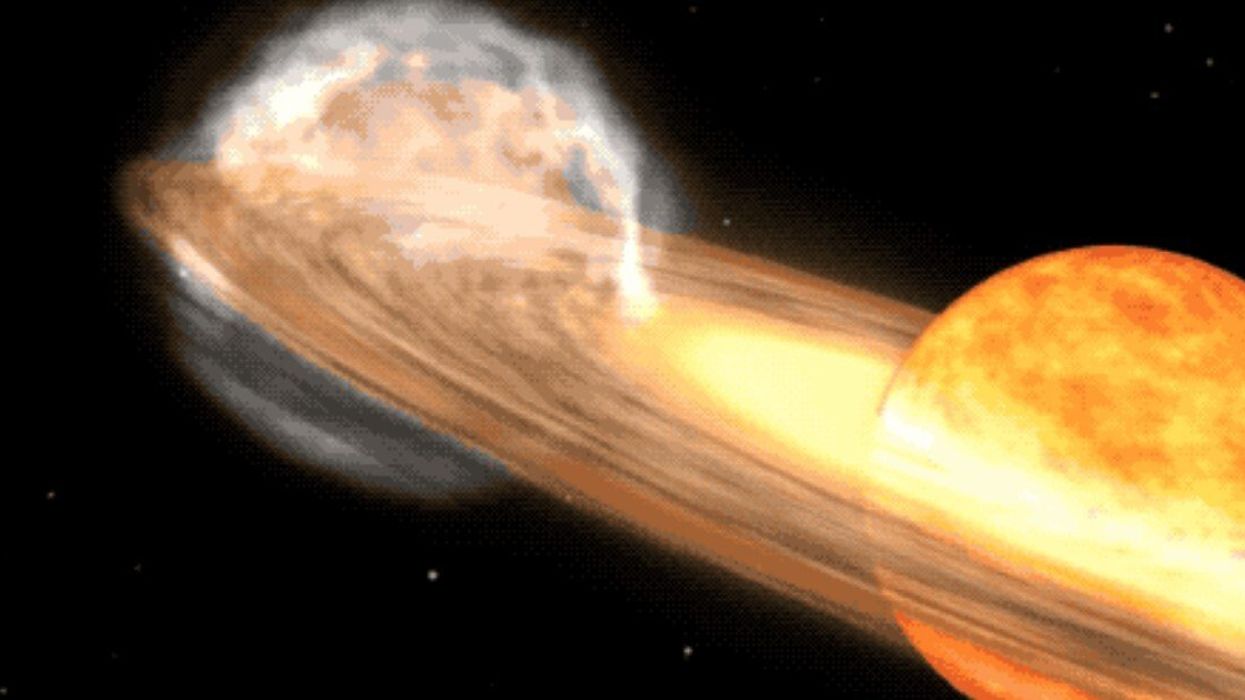Sinead Butler
Apr 09, 2024

Humans will be able to witness a giant explosion in space this year
Nasa Goddard Space Flight Center/PA Wire
Now that the solar eclipse has passed, there is another celestial event on the calendar later this year - and it involves a massive explosion 3,000 light years from Earth...
Astronomers will get the rare once-in-a-lifetime opportunity to see the binary star system in the constellation T Corona Borealis - "northern crown" - light up the night sky, caused by an exchange between two stars which will give it the appearance of a new star.
Normally, Corona Borealis is too dim to see with the naked eye, but this runaway nuclear explosion should be visible to the unaided eye for several days and just over a week at the peak of its brightness with binoculars before it dims again, according to NASA which says it will look as bright as the North Star when it appears in the sky.
The last time the explosion occurred was 78 years ago in 1946 and after this year, it will be another 80 years until the next one - so a long wait if you miss out.
It is only the third time humans have witnessed this event, Irish polymath John Birmingham first discovered it back in 1866.
Sumner Starrfield, an astronomer at Arizona State University is rushing to finish a scientific paper on predictions for the recurring nova when it reappears soon.
Since the 1960s, he has worked on T Coronae Borealis and told AFP he is very excited to see the nova's impending "outburst".
"I could be today... but I hope it's not," he said with a laugh.
There are only around 10 recurring novas in the Milky Way and surrounding galaxies, Starrfield explained.
While normal novas explode "maybe every 100,000 years, the astronomer stated how recurrent novas repeat their outbursts on a human timeline.
This is all to do with the relationship between the two stars - the well-aged red giant and the dead white dwarf.
The size difference between the two is demonstrated as it takes T Coronae Borealis's white dwarf 227 days to orbit its red giant, according to Starrfield.
Matter gets ejected by the red giant collecting near the surface of the white dwarf as a result of the two stars being in close proximity to each other.
Then, it takes 80 years for the mass almost equivalent to Earth to build up on the white dwarf and heat up to trigger a runaway thermonuclear reaction.
Consequently, "big explosion and within a few seconds" with a temperature increase of 100-200 million degrees Celsius, Joachim Krautter, a retired German astronomer told AFP.
The James Webb space telescope will capture images of the event and no doubt there will be plenty of skygazers looking in the direction of the Corona Borealis when it occurs sometime within the next few months.
How to join the indy100's free WhatsApp channel
Sign up to our free indy100 weekly newsletter
Have your say in our news democracy. Click the upvote icon at the top of the page to help raise this article through the indy100 rankings.
Top 100
The Conversation (0)













